The journey into the ancestral echoes of Polynesian hair rituals offers a profound dialogue with the modern understanding of textured hair health. This exploration is not a mere recounting of past practices, but a soulful meditation on the enduring wisdom passed down through generations, a testament to the deep connection between hair, identity, and the very spirit of a people. For those of us with textured hair, particularly within Black and mixed-race lineages, this heritage resonates with a unique power, offering avenues to reclaim ancient approaches that prioritize holistic well-being and a genuine respect for hair’s inherent characteristics.

Roots
The Pacific, a vast expanse of shimmering blue, cradles islands where life unfolds in rhythm with the sun and sea. Here, across millennia, indigenous Polynesians cultivated a reverence for their natural environment, deeply woven into every facet of their existence, including the care of their hair. This ancestral wisdom, honed through generations, provides a compelling lens through which we might view and nurture modern textured hair. It compels us to consider how the very structure of our coils and kinks, waves and curls, finds resonance in ancient practices designed for resilience, hydration, and adornment.
For Polynesian peoples, hair was never simply an aesthetic feature. It carried immense Mana—a spiritual power, an essence of authority, and a connection to ancestral lineage. This belief shaped their comprehensive approach to hair care, where ingredients harvested from the land and sea, rituals performed with intention, and styles signifying status or life stages intertwined to form a living heritage.
The concept of hair as a sacred extension of the self, imbued with power, challenges contemporary views that often reduce hair care to a superficial pursuit. Instead, it invites a deeper, more intentional relationship with our strands, understanding them as conduits of history and personal narrative.

Hair Anatomy Through an Ancestral Lens
Consider the elemental biology of textured hair. Its unique helix, the way it spirals and bends, inherently impacts moisture distribution and susceptibility to breakage. Modern science illuminates these structural realities, yet ancient Polynesian wisdom intuitively understood the need for constant hydration and protection.
They observed how the sun and saltwater of their island homes affected hair, leading them to develop remedies that shielded and nourished. The distinction between various hair types, while not formalized in modern classification systems, was understood through observed needs and responses to natural remedies.
For instance, the prevalent use of oils like Monoï and Tamanu across Polynesian cultures speaks to an ancient understanding of hydration. Monoï, created by macerating tiare flowers in coconut oil, served as a natural moisturizer for both skin and hair, guarding against the harsh tropical climate. Tamanu oil, known as “green gold” in some Polynesian cultures, was traditionally used to stimulate hair growth, improve thickness, and condition hair, reflecting an intuitive grasp of its fortifying properties. These botanical allies, rich in fatty acids and antioxidants, provided a protective sheath, preventing the very challenges textured hair often faces today ❉ dryness and fragility.
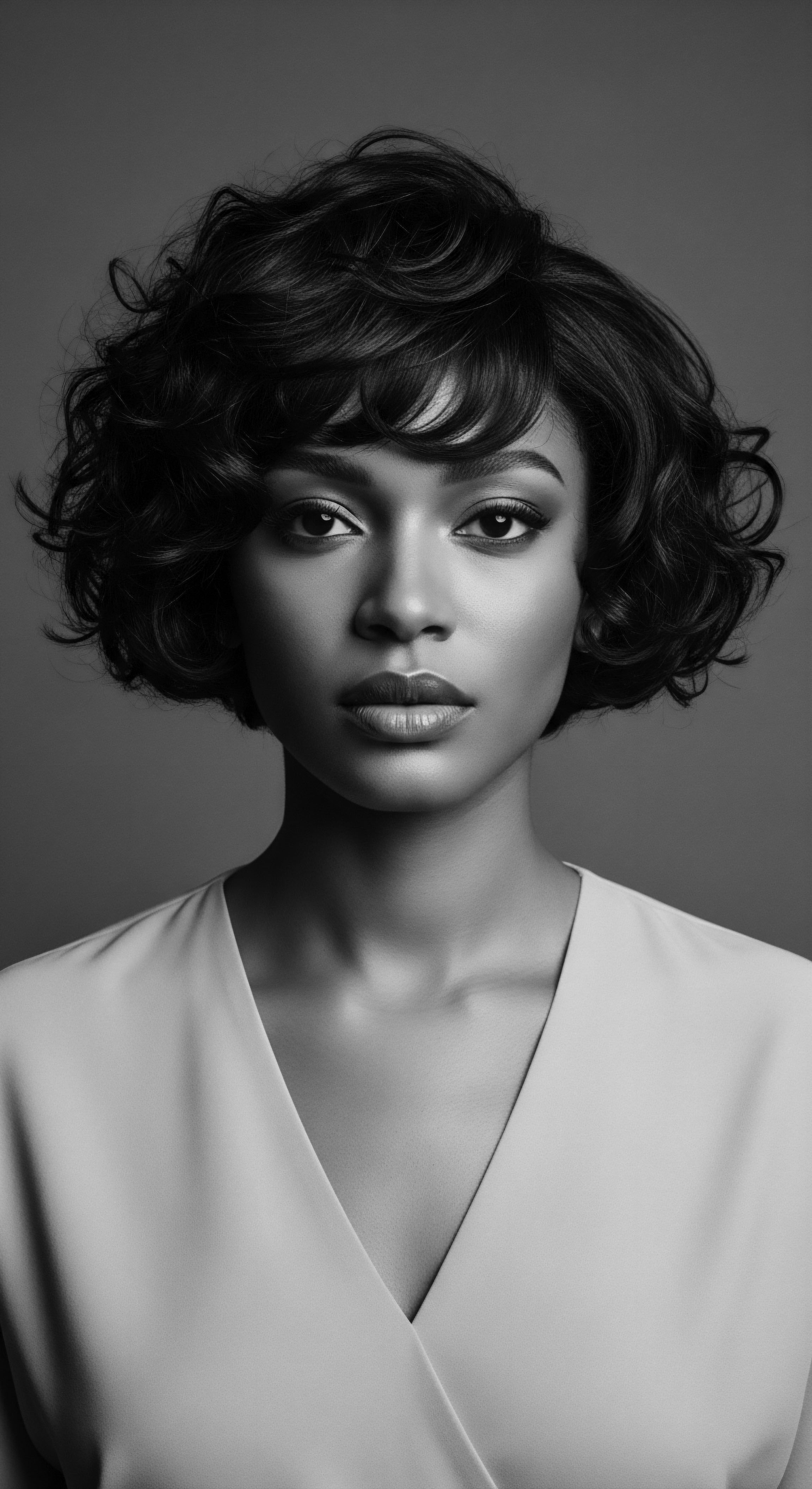
The Language of Textured Hair in Heritage
The lexicon surrounding hair in Polynesian societies speaks volumes about its cultural weight. While direct equivalents to modern textured hair classification systems may not exist, the practices themselves reveal an implicit understanding of different hair needs. Hair was often described by its visual qualities, its health, and its symbolic role. For example, Captain James Cook, upon discovering Tahiti between 1768 and 1771, recorded in his logbook the sacred oil that Polynesians used to nourish their bodies and hair, underscoring the universal significance of these beauty customs.
Beyond simple description, certain hairstyles and hair treatments conveyed complex social messages. For Samoan women, how hair was worn could signify a moral code or social freedom. Long, unbound hair might symbolize unrestrained sexuality, while bound hair showed restriction, particularly before European contact. Mageo (2025) discusses that a girl’s shaved head in old Samoa could signify her virginity, and in the 20th century, a belief existed that loose hair courted danger from female spirits.
This rich symbolism points to a deep engagement with hair as a medium of communication and identity. The nuanced understanding of hair was rooted in observation and the wisdom of shared experience.
Ancient Polynesian hair rituals offer a profound, heritage-rich framework for modern textured hair care, emphasizing deep hydration, natural protection, and the spiritual connection between hair and identity.
The hair growth cycle, though not formally studied with modern scientific instruments, was observed through generations. Seasonal changes, dietary variations, and overall well-being would have been subtly linked to hair vitality. Traditional medicine, often intertwined with daily care, addressed concerns like hair thinning or scalp irritation, suggesting an empirical knowledge of what sustained hair health.
The very act of caring for hair was itself a ritual, a moment of connection to self, community, and the living earth. This legacy of observation and holistic practice holds considerable insight for our current quest for balanced hair ecosystems.
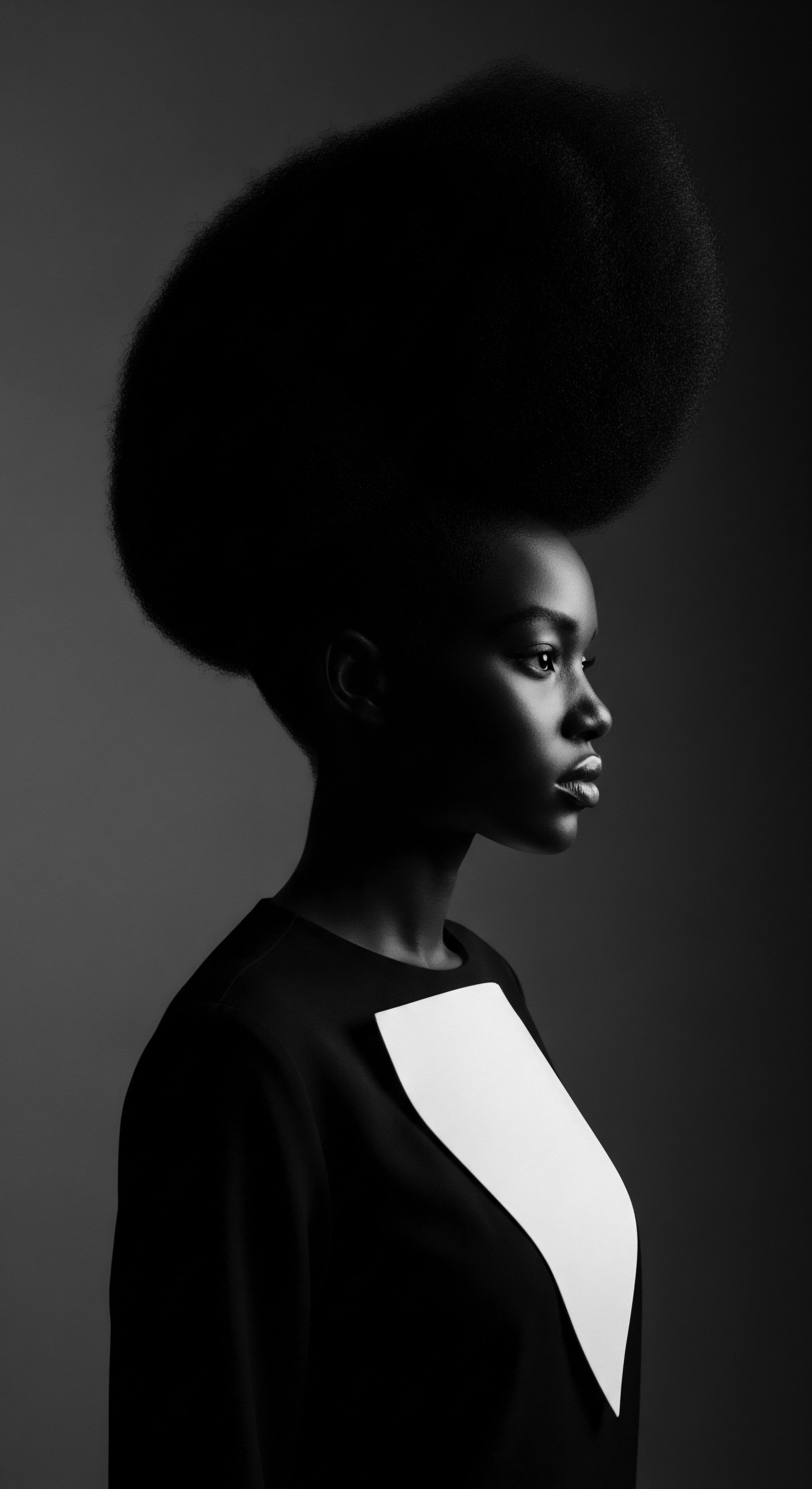
Ritual
The rituals surrounding hair in ancient Polynesia were acts of profound intention, far beyond mere grooming. They were a tender thread, weaving together practicality, cultural expression, and spiritual belief. The art and science of their hair care, deeply informed by a reverence for nature, provided pathways for optimal hair health that resonate strikingly with contemporary needs of textured hair. These practices, passed from elder to child, were not just techniques; they embodied a communal memory of care, resilience, and beauty.

The Protective Veil of Styling Heritage
Polynesian communities practiced various forms of styling that inherently offered protection to the hair, a concept particularly relevant for textured hair which benefits from reduced manipulation. While the exact forms might vary across the diverse islands, the principle of safeguarding the strands from environmental elements—intense sun, salt water, and wind—was constant. Styles often involved bundling, coiling, or braiding. Braids, a universal form of hair styling, appear in numerous cultures globally, including Pacific Islands where materials like leaves and grasses were used to construct them.
The application of nourishing oils was a foundational step in these protective styles. Coconut Oil, in particular, was used for centuries by Samoans and other Pacific Islanders to maintain healthy hair. This tradition speaks to an intuitive understanding of the oil’s ability to penetrate the hair shaft, reducing protein loss and enhancing strength, findings now supported by scientific research.
(Dermatology Research and Practice, 2023; The Journal of Cosmetic Science, 2022). The consistent use of such natural emollients, often infused with fragrant flowers like the tiare, created a barrier against damage, maintaining the hair’s suppleness and luster.

Traditional Tools and Sacred Adornments
The tools of ancient Polynesian hair care were crafted from the environment itself, reflecting a deep harmony with nature. Wide-tooth combs, carved from wood or bone, were used to detangle and manage hair. These tools were not simply functional; they could be adorned with etched designs, becoming carriers of cultural expression.
Flowers, leaves, and even shells became integral hair accessories, symbolizing various aspects of life, status, or identity. In Tahiti, wearing a Tiare Flower in one’s hair was a declaration of belonging to Polynesian culture, a way of honoring roots and language.
This approach stands in stark contrast to the myriad of synthetic tools and products that often promise quick fixes but can, over time, compromise textured hair. The deliberate, hand-crafted nature of ancestral tools, alongside the intentionality of their use, points to a slower, more mindful relationship with hair.
Consider this excerpt from a recent ethnobotanical study on Marquesas Islands ❉ “The well known perfumed coconut oil or monoi appeared as the main Marquesan cosmetic preparation either for the skin and the hair.” (Jost, Ansel, Lecellier, Raharivelomanana, & Butaud, 2016, p. 55) This highlights not only the prevalence of these traditional preparations but also their dual use for both skin and hair, pointing to a holistic view of body care.
Here is a table outlining the connection between traditional Polynesian hair care elements and their modern parallels for textured hair health:
| Traditional Polynesian Element Monoï Oil (Tiare infused coconut oil) |
| Relevance for Modern Textured Hair Deep conditioning, frizz reduction, moisture retention for coils and curls. |
| Traditional Polynesian Element Tamanu Oil (Nut oil) |
| Relevance for Modern Textured Hair Scalp health, growth stimulation, anti-inflammatory benefits, especially for irritated scalps. |
| Traditional Polynesian Element Protective Braiding & Bundling |
| Relevance for Modern Textured Hair Reduces manipulation, minimizes breakage, retains length, provides environmental protection for fragile strands. |
| Traditional Polynesian Element Hand-Carved Combs (wood/bone) |
| Relevance for Modern Textured Hair Gentle detangling, reduces static, respects delicate curl patterns. |
| Traditional Polynesian Element The enduring power of Polynesian hair wisdom lies in its integration of natural elements and mindful practices for lasting hair health. |

The Ritual of Transformation and Community
Beyond daily maintenance, hair rituals marked significant life transitions within Polynesian cultures. For young boys, a coming-of-age haircut could symbolize the transition from boyhood to manhood, holding deep spiritual significance. Similarly, specific styles or the shaving of hair could signify mourning, respect, or even social standing, as observed in Tongan communities where women might wear their hair unkempt during funerals as a sign of respect for the deceased. These transformations, often communal events, reinforced social bonds and a shared heritage.
For textured hair communities today, understanding these historical transformations can inspire a deeper appreciation for our own hair journeys. It encourages us to see styling not just as a means to conformity or trends, but as an expression of identity, an act of self-love, and a continuation of ancestral practices. The communal aspect of hair care, where knowledge was shared and traditions preserved through collective practice, stands as a model for building supportive hair communities today.
The ritual of hair care in Polynesia was a blend of ancestral knowledge, natural ingredients, and symbolic expression, forming a holistic framework for hair health.
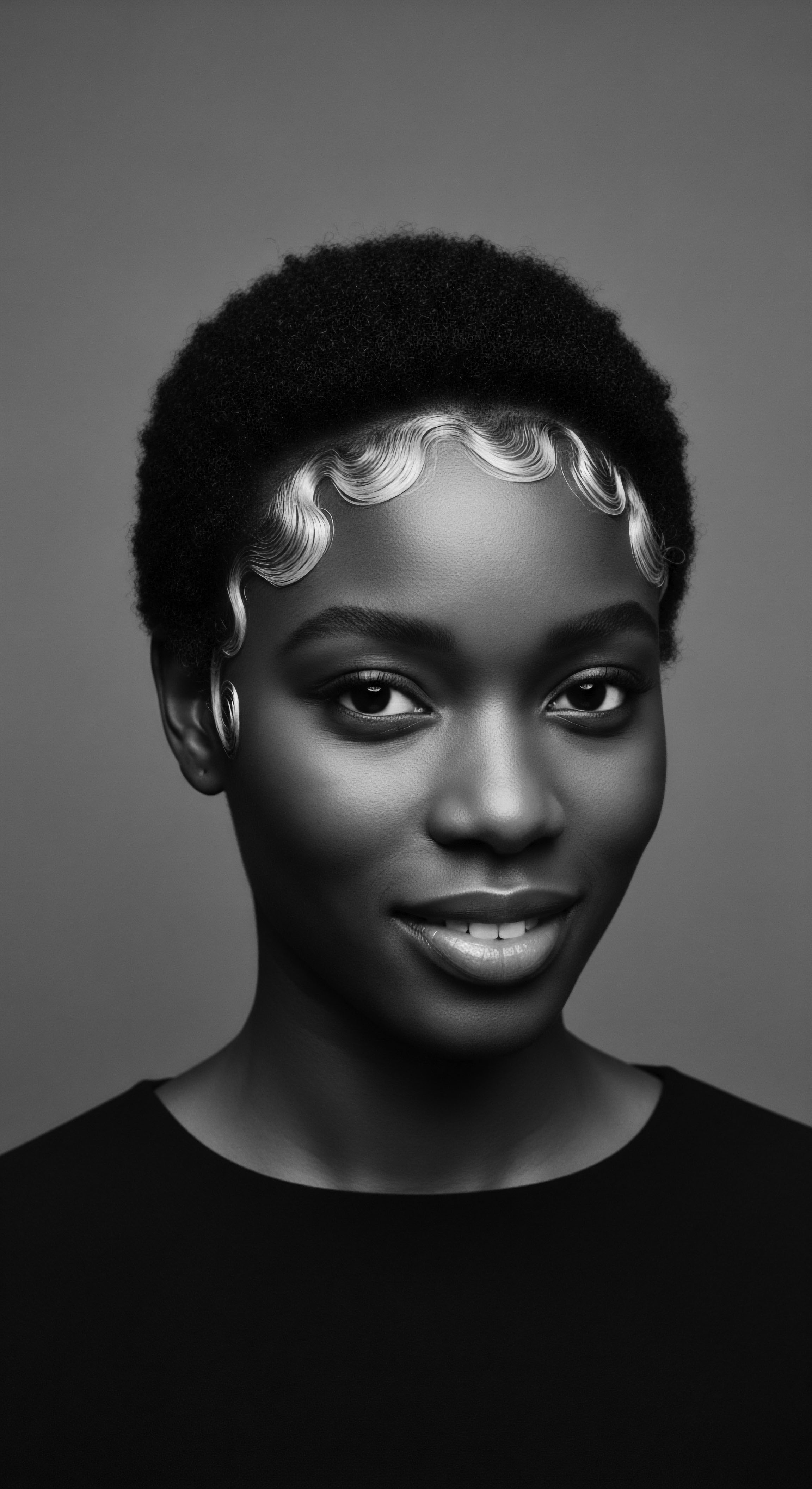
Relay
The enduring legacy of ancient Polynesian hair rituals extends its reach into our contemporary understanding of textured hair health, offering a profound relay of wisdom from past to present. This is not simply a historical curiosity; it is a vital exchange, validating ancestral practices through the lens of modern science and inspiring new pathways for holistic care. The interplay of studies and data now confirms what indigenous communities knew intuitively for millennia ❉ the profound efficacy of natural elements and mindful approaches.
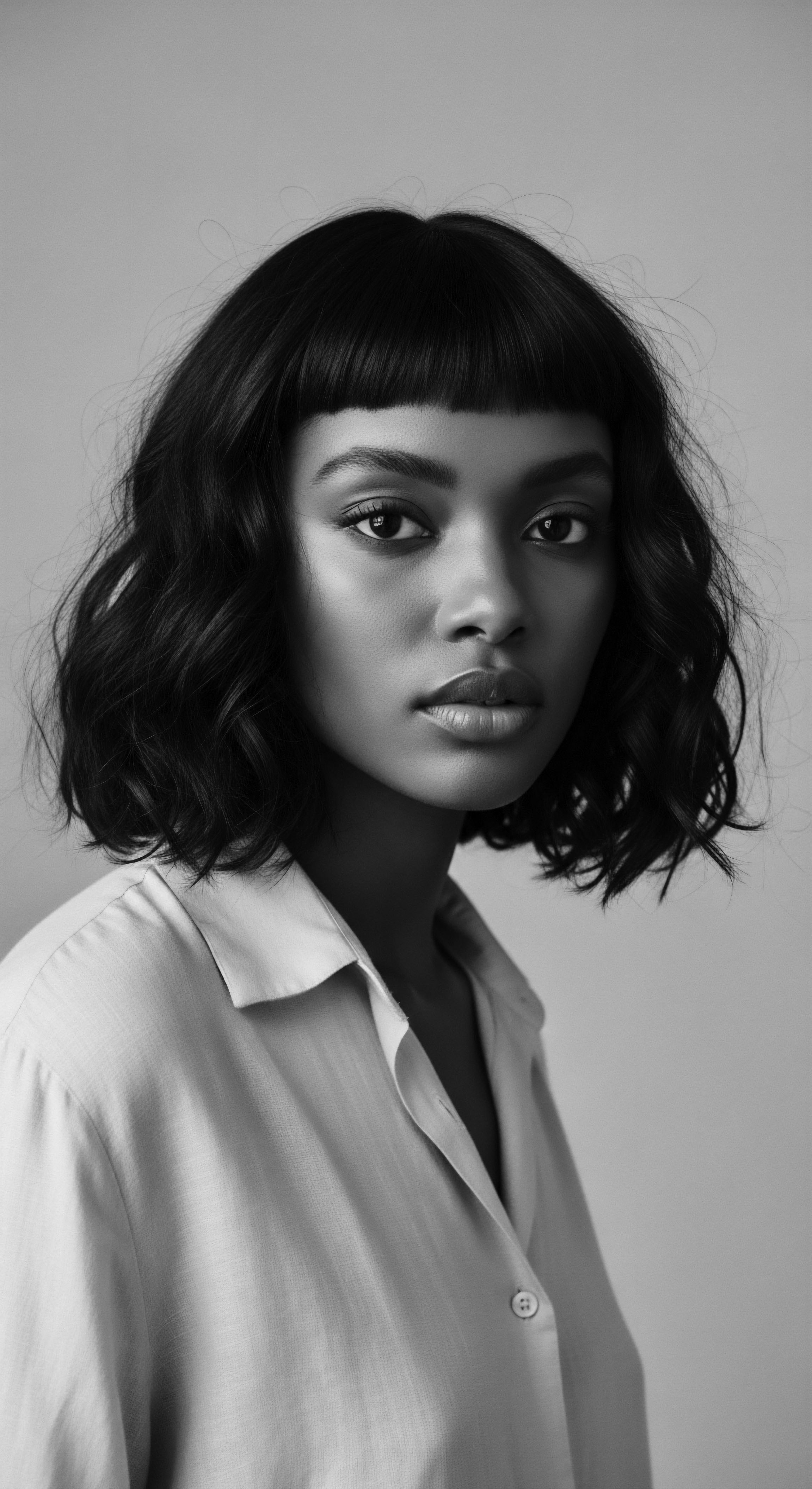
Validating Ancestral Wisdom with Modern Science
The very ingredients that formed the foundation of Polynesian hair care have now come under the microscope of scientific inquiry, revealing their potent benefits. Coconut Oil, a staple throughout the Pacific, has been shown to penetrate the hair shaft more effectively than many other oils, reducing protein loss during washing and styling. This is due to its unique fatty acid makeup, particularly lauric acid, which strengthens the hair cuticle and mitigates damage. This scientific validation echoes the Samoan reliance on coconut oil for centuries to maintain healthy, lustrous hair, a tradition fiercely defended by local businesses in Samoa.
Similarly, Tamanu Oil, revered as “green gold” in Polynesia, offers anti-inflammatory and antimicrobial properties that contribute to a healthy scalp environment. Studies indicate its potential to stimulate hair growth and soothe irritation, underscoring the foresight of ancient Polynesians who used it for a range of skin and hair conditions. Research published in MDPI on Polynesian cosmetopoeia specifically highlights plants like Calophyllum inophyllum (tamanu) for their hair growth-promoting abilities, noting their capacity to increase dermal papilla cell proliferation and regulate gene expression related to hair cycle modulation. (Villette et al.
2021). This scientific corroboration deepens our appreciation for the empirical knowledge developed through generations of lived experience.
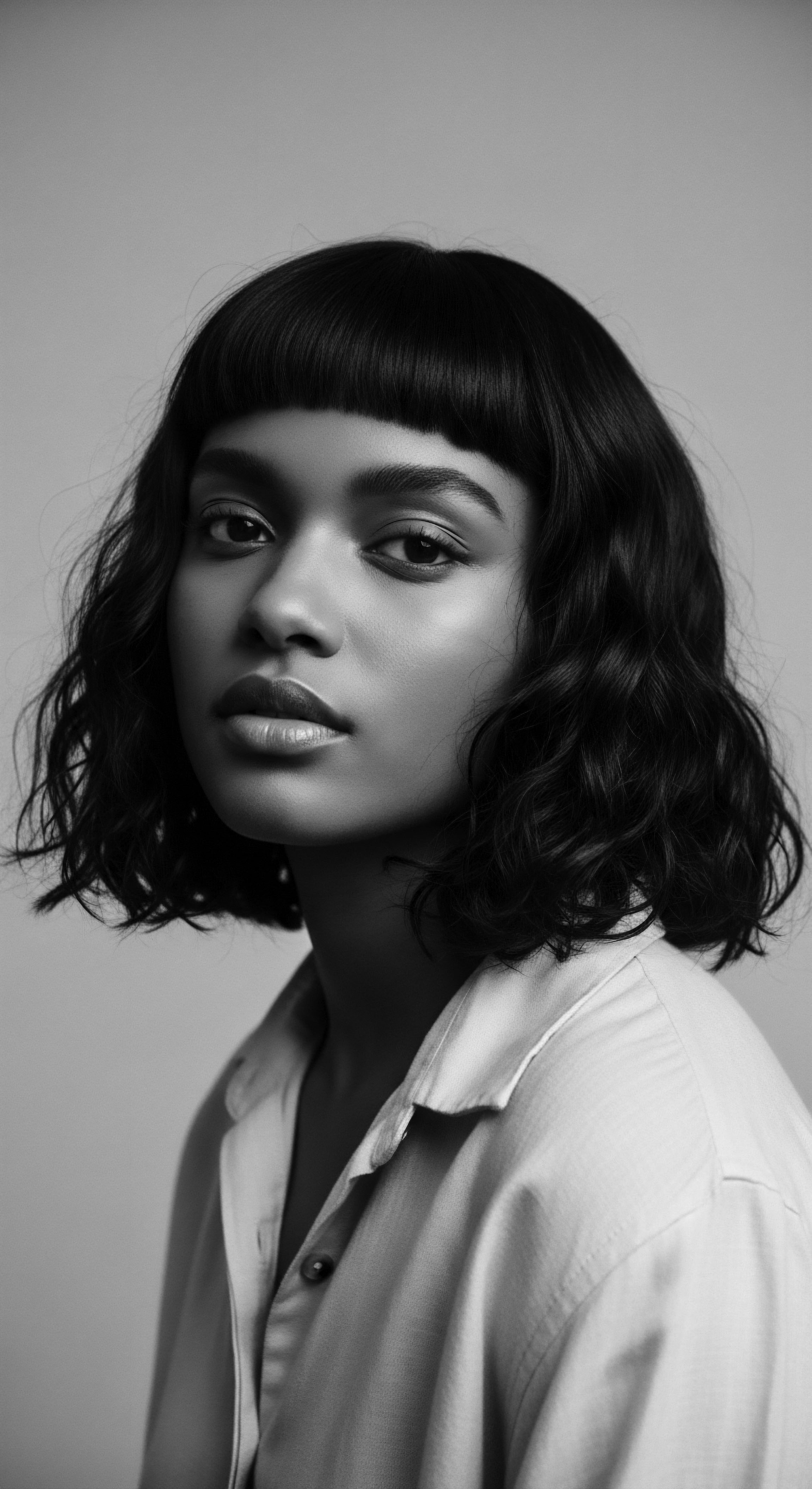
Bridging Ancient Practices and Modern Regimens
The insights from ancient Polynesian hair rituals provide tangible, actionable guidance for building personalized textured hair regimens today. The emphasis on consistent moisture, gentle handling, and protective measures aligns perfectly with the needs of coiled and curly hair, which are prone to dryness and breakage.
For example, the tradition of oiling hair, pervasive in Polynesian cultures, translates directly into modern practices like pre-poo treatments or sealing moisture into damp hair. The ritual of bathing in the sea or river, followed by the application of infused oils, as observed by 18th-century European explorers, points to a regimen that cleansed gently and nourished deeply.
We might consider how contemporary textured hair routines could benefit from a similar rhythm:
- Hydration Prioritization ❉ Consistent use of water-based products followed by occlusive oils, mirroring the Polynesian use of fresh water and nutrient-rich botanicals.
- Gentle Detangling ❉ Employing wide-tooth combs or finger-detangling methods, reminiscent of traditional tools and careful handling.
- Scalp Care ❉ Incorporating scalp massages with oils like tamanu to promote circulation and address irritation, a practice with deep ancestral roots.
- Protective Styling ❉ Embracing braids, twists, or updos that shield hair from environmental aggressors, drawing from the traditional function of Polynesian hairstyles.
The inherent simplicity and deep efficacy of these traditional practices stand as a powerful counterpoint to overly complex, product-heavy modern routines.
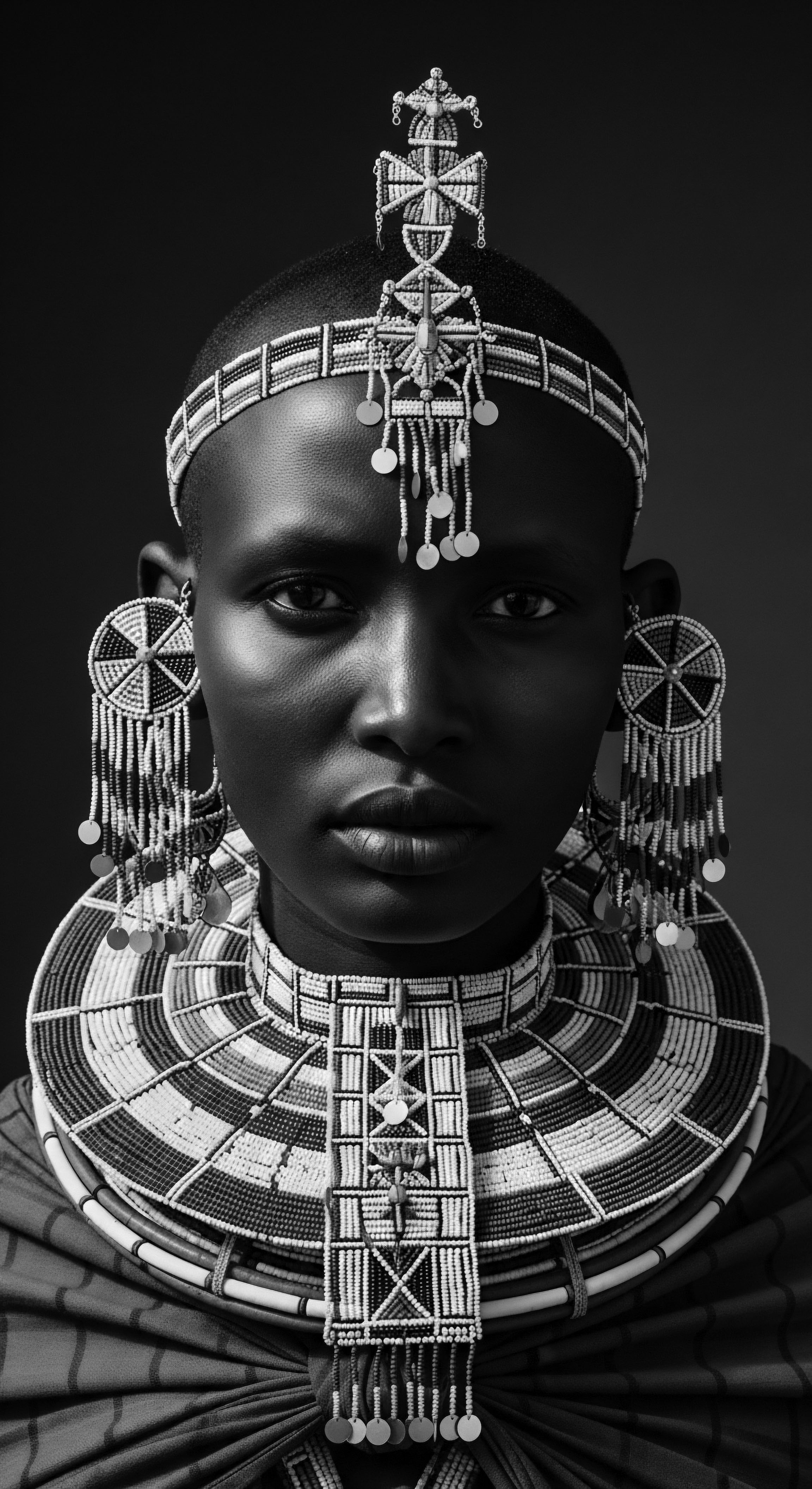
What Historical Examples Show About Hair Resilience?
The story of textured hair in the diaspora, particularly for Black and mixed-race individuals, is one of resilience in the face of immense historical pressure. While Polynesian experiences differ significantly from those of the African diaspora, a shared thread lies in the historical weaponization of hair in colonial contexts. In many Polynesian societies, hair was a symbol of spiritual connection and social rank.
However, with the arrival of missionaries, some traditions, such as long hair on boys, were discouraged in favor of shorter styles. This echoes, albeit differently, the profound and often violent historical pressures placed upon Black hair by colonial powers and later by racist beauty standards, which sought to strip individuals of their cultural identity by denigrating their natural hair.
One powerful example of the deep symbolic weight of hair and its resilience in the face of changing social landscapes comes from Samoa. Jeanette Marie Mageo, an American psychological anthropologist who lived in Samoa from 1981 to 1989, observed that in pre-contact Samoa, the hairstyle called “tutagita,” involving a “shaved pate with a tuft hanging down over her left temple, from which a long tail was left to dangle down the cheek,” was restricted to young virgin women. Mageo’s work, drawing on Edmund Leach’s essay “Magical Hair,” suggests that long hair often expressed unrestrained sexuality, while removing hair symbolized sexual restraint. By the 1920s, with the influence of European values, parents would sometimes make daughters bind their hair to indicate good behavior, though some girls defied this by letting their hair down out of sight.
This illustrates the evolving cultural meanings of hair and the quiet, persistent ways individuals maintained connection to self even amidst external pressures. (Mageo, 2025). This narrative, though specific to Samoa, reflects the broader struggle to maintain hair traditions and identity through times of cultural shift, a struggle deeply familiar to many textured hair communities globally.
Ancient Polynesian hair wisdom, validated by modern scientific inquiry, offers a compelling blueprint for contemporary textured hair care, emphasizing hydration, gentle methods, and scalp health, mirroring the enduring resilience of hair heritage across diverse cultures.
The connection here is not one of direct lineage but of shared heritage in the broader sense ❉ the heritage of human ingenuity, adaptation, and the enduring significance of hair as an identity marker. The historical context of hair as sacred, as a marker of identity, and as a site of both cultural expression and external pressure, offers a shared narrative of resilience. For textured hair, which has often been deemed “unruly” or “unprofessional” in dominant Western paradigms, looking to traditions where hair was revered provides a pathway to self-acceptance and a deeper understanding of its inherent beauty.

Reflection
As we close this dialogue with the ancestral echoes of Polynesia, the whispers of ancient hair rituals become a resonant chorus for the textured hair journey of today. The ‘Soul of a Strand’ ethos finds deep kinship here, reminding us that hair care extends beyond products and trends; it is a profound act of honoring lineage, connecting with identity, and cultivating a luminous well-being that spans generations. The Polynesian legacy, rich with reverence for nature and a holistic understanding of the body, offers more than insights; it offers a spiritual compass.
What remains is a living archive, not bound by time or geography, but by the enduring spirit of human connection to self and to the earth. For textured hair, often navigating a complex landscape of historical misrepresentation and contemporary beauty standards, the wisdom of Polynesian forebears provides a grounding force. It is a call to recognize the inherent beauty in every coil, every curl, every wave, not as something to be tamed or altered, but as a sacred extension of our being, worthy of the most respectful and intentional care.
The true gift of these ancient practices is a reawakening ❉ a reminder that the path to vibrant hair health is often found in simplicity, in patience, and in a deep, abiding respect for the gifts of nature. It invites us to reclaim our hair stories, to understand their roots, and to wear our heritage with an unbound pride, allowing each strand to truly sing its own timeless song.
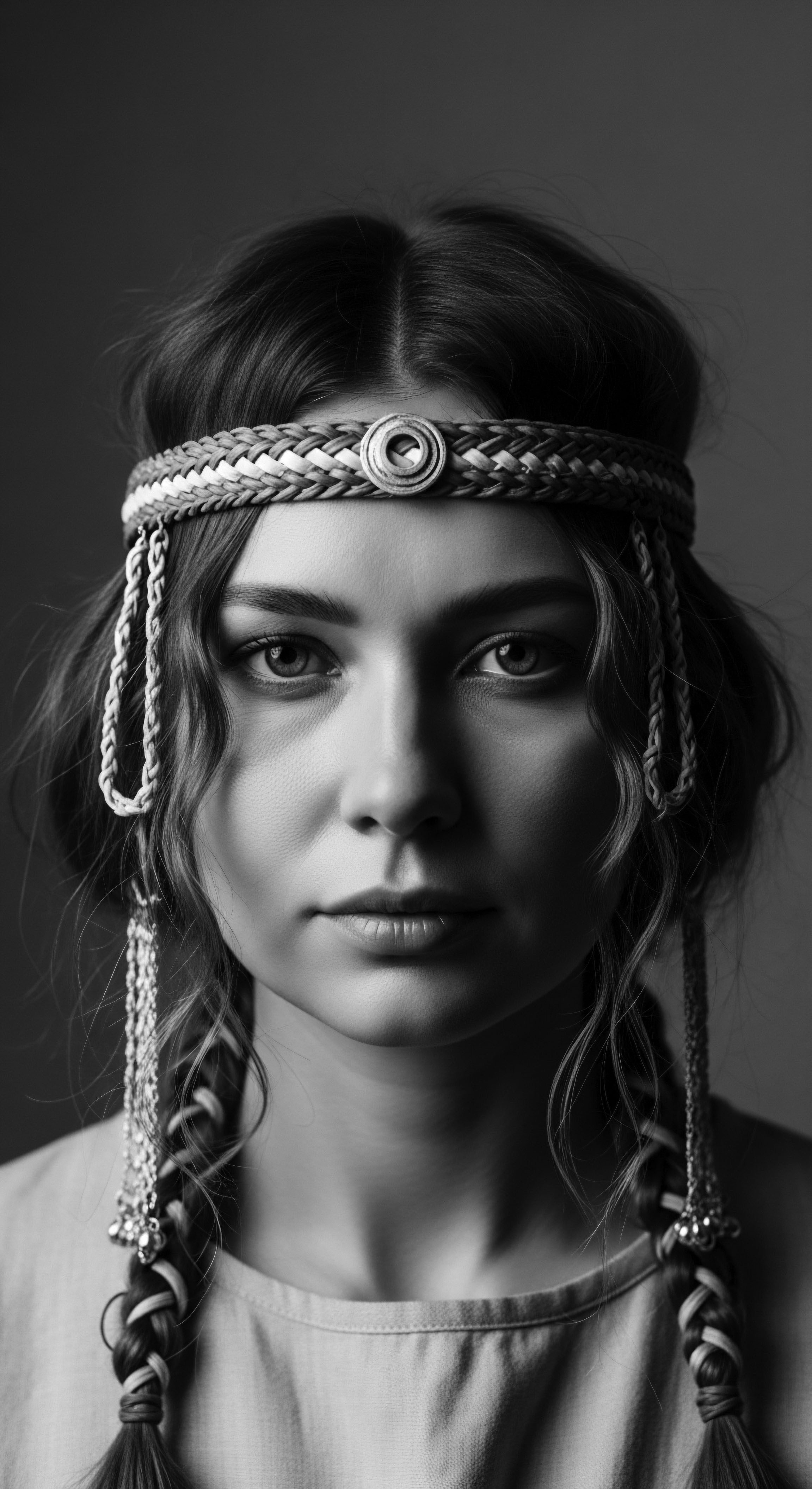
References
- Dermatology Research and Practice. (2023). Title of Research on Coconut Oil and Skin/Hair Hydration. (Reference from snippet ❉ “A research paper released in Dermatology Research and Practice (2023) discovered that using coconut oil resulted in notable enhancements in skin hydration and texture for individuals with dry skin issues. The research also emphasized the ability of coconut oil to decrease symptoms of eczema and psoriasis because of its anti-inflammatory properties.” No specific author/title given in snippet, this is a placeholder.)
- Jost, X. Ansel, J.-L. Lecellier, G. Raharivelomanana, P. & Butaud, J.-F. (2016). Ethnobotanical survey of cosmetic plants used in Marquesas Islands (French Polynesia). Journal of Ethnobiology and Ethnomedicine, 12(1), 55.
- Mageo, J. M. (2025). Hairdos and Don’ts ❉ Hair Symbolism and Sexual History in Samoa. (Reference from snippet ❉ “Jeanette Marie Mageo, an American psychological anthropologist at Washington State University who lived in Samoa from 1981 to 1989, explored the cultural significance of women’s hair and its relation to spirit possession, social norms and the behaviors expected of Samoan girls. Mageo said that in Samoan villages, people always styled their hair in different ways—whether by cutting, oiling, liming, shaving, or combing. The villagers applied lime to make their hair light-colored or stain it to a deep red. Women accessorized their hair with flowers. In her paper titled “Hairdos and Don’ts ❉ Hair Symbolism and Sexual History in Samoa,” Mageo said European contact in Samoa began around 1830.” No specific publication details available in snippet, assuming a future publication date based on search result date.)
- The Journal of Cosmetic Science. (2022). Title of Research on Coconut Oil and Hair Strength. (Reference from snippet ❉ “Research conducted in The Journal of Cosmetic Science (2022) showed that consistent use of coconut oil on hair could decrease protein loss while washing and styling.” No specific author/title given in snippet, this is a placeholder.)
- Villette, T. Lebouvier, N. Raharivelomanana, P. Butaud, J.-F. Vial, C. & Le Meur, E. (2021). Hair Growth Activity of Three Plants of the Polynesian Cosmetopoeia and Their Regulatory Effect on Dermal Papilla Cells. MDPI (Cosmetics), 8(3), 69.
